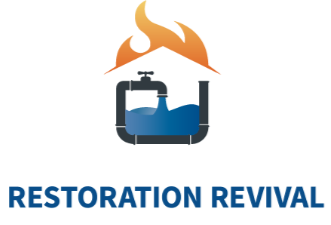STORM DAMAGE: The Impact of Storm Damage on Your Home’s Value and How to Restore It
When a storm hits, the damage to your home can be devastating. From roof leaks to flooded basements, the aftermath of a storm can leave your home in shambles. But aside from the immediate effects on your property, storm damage can also have a lasting impact on your home’s value.
Storm damage can significantly decrease the value of your home, making it harder to sell or refinance in the future. From structural issues to cosmetic damage, the effects of a storm can be costly to repair and may require extensive restoration efforts to bring your home back to its original condition. In this article, we will explore the impact of storm damage on your home’s value and provide tips on how to restore it.
Impact of Storm Damage on Home Value
Storm damage can have a wide range of impacts on your home’s value, depending on the severity of the damage and the extent of repairs needed. Some of the most common ways that storm damage can affect your home’s value include:
1. Structural Damage: Storms can cause significant structural damage to your home, including roof leaks, foundation cracks, and wall damage. These types of issues can be costly to repair and may require professional assistance to ensure that your home is safe and structurally sound.
2. Water Damage: Flooding and water damage are common outcomes of storms, especially in areas prone to heavy rainfall or coastal flooding. Water damage can cause mold growth, rotting wood, and other problems that may diminish the overall value of your home.
3. Cosmetic Damage: Storms can also cause cosmetic damage to your home, such as broken windows, damaged siding, and fallen trees. While these issues may not pose a threat to the structural integrity of your home, they can still detract from its overall curb appeal and value.
4. Decreased Marketability: Homes that have been damaged by storms may be less attractive to potential buyers, as they may be perceived as being more vulnerable to future damage. This can make it harder to sell your home or may require you to lower your asking price in order to attract buyers.
Restoring Your Home After Storm Damage
If your home has been damaged by a storm, it’s important to take action quickly to prevent further damage and restore your home to its original condition. Here are some tips on how to restore your home after storm damage:
1. Assess the Damage: Before you can start on any repairs, you’ll need to assess the extent of the damage to your home. This may involve hiring a professional inspector or contractor to conduct a thorough inspection and provide you with a detailed assessment of the damage and necessary repairs.
2. Contact Your Insurance Company: If your home is covered by homeowners insurance, contact your insurance company as soon as possible to file a claim for storm damage. Your insurance policy may cover the cost of repairs, depending on the type of damage and your coverage limits.
3. Make Temporary Repairs: To prevent further damage to your home, make temporary repairs as needed, such as tarping a damaged roof or boarding up broken windows. These temporary repairs can help protect your home from further damage while you wait for permanent repairs to be made.
4. Hire Professionals: Depending on the extent of the damage, you may need to hire professionals to assist with repairs. This may include contractors, roofers, plumbers, and other specialists who can help restore your home to its original condition.
5. Obtain Permits: In some cases, you may need to obtain permits from your local government before making repairs to your home. Check with your local building department to determine whether permits are required for the work you plan to undertake.
6. Consider Upgrades: While you’re making repairs to your home, consider upgrading certain features to improve its value and appeal. This may include installing energy-efficient windows, updating your kitchen or bathroom, or adding a new coat of paint to freshen up the exterior.
7. Monitor for Mold: After a storm, it’s important to monitor your home for signs of mold growth, especially if you’ve experienced water damage. Mold can pose serious health risks and may require professional remediation to safely remove from your home.
8. Document Your Repairs: Keep detailed records of all repairs made to your home, including receipts, contracts, and before-and-after photos. This documentation can be helpful when filing insurance claims or when selling your home in the future.
9. Maintain Your Home: To prevent future storm damage and preserve your home’s value, make sure to maintain your home’s exterior and address any issues as they arise. This may include cleaning gutters, trimming trees, and inspecting your roof for signs of damage.
In conclusion, storm damage can have a significant impact on your home’s value, but with prompt action and proper restoration efforts, you can restore your home to its original condition. By following these tips and taking necessary precautions, you can protect your home from storm damage and preserve its value for years to come.
For more information visit:
HOME | RESTORATION REVIVAL | Water Damage Restoration in Newnan | Georgia
https://www.restoringwithrevival.com/
470-241-9286
Newnan, GA
Restoration Revival specializes in 24/7 emergency restoration in Newnan, GA, including water damage, fire damage, storm damage, and mold remediation. We are dedicated to reviving your past, and restoring your future. When disaster strikes, RESTORATION REVIVAL will help you navigate the restoration process. We’re here to support you every step of the way, offering a comprehensive range of services to restore your property and belongings providing you with peace of mind.

